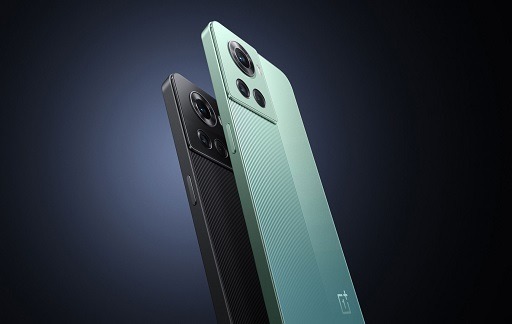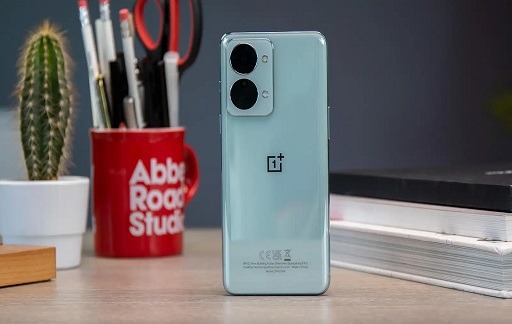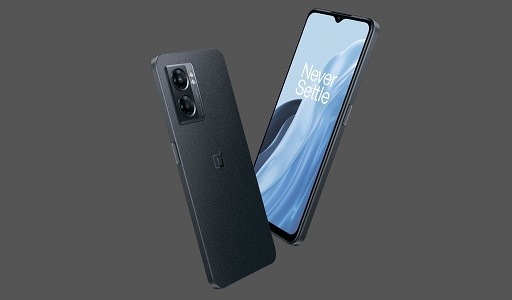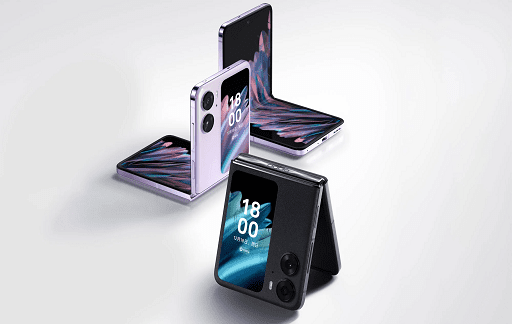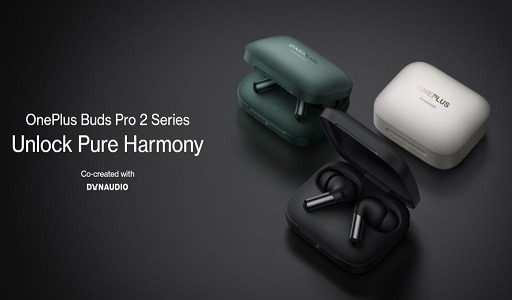To say the high-end smartphone industry is crowded and competitive is to state the obvious, and with Apple, Samsung, and Google in the mix, there’s not much room to fit in. Nonetheless, many other businesses compete for the leftovers left by the big three, and one of them is the ancient and renowned Motorola, which will launch Edge+ in 2022.
The Edge+ is loaded with cutting-edge technology and is priced to indicate that they intend to establish a name for themselves with this device. Tushar Mehta of Digital Trends got some hands-on time with the Edge+ (2022) in February, and while he found it to be powerful, he didn’t find anything more to recommend it over the competition. Let’s dig in and find if there’s more to the Edge+ than meets the eye.

Motorola Edge+ Design
Despite not looking much different from the 2021 Motorola Edge on the outside, the 2022 Edge+ has a very stunning design. Its blue color is designed in such a way that it changes color as it catches the light. It seems a shame to cover that up with a case, but I have learned the hard way the hazards of not taking that care, so if you’re like me, the color of the phone’s back is something to appreciate just during the unboxing process.
The vertical array of cameras is meant to protrude less significantly than many other smartphone camera arrays, making the Edge+ simpler to put on a flat surface. It’s also easy to handle in the hand. However, the materials used are fairly cheap, and it’s only classified as IP52, which means you’ll have to be more careful about dust, and it’s not water-resistant.
The power button beneath the volume rocker doubles as a fingerprint scanner, and the phone, as expected, has a USB-C connector. There are bezels, but they are small, black, and unobtrusive, and a hole-punch selfie camera sits in the upper section of the screen. At 196 grams, the Edge+ (2022) is reasonably light.
You may also like Moto G Power Review
Motorola Edge+ Software and Performance
The Edge+ excels in terms of raw processing power. It has a Snapdragon 8 Gen 1 CPU, a Qualcomm Adreno GPU, and up to 12GB of LPDDR5 RAM. I felt like I was using a high-end flagship device as I was browsing the phone, playing games like Dota Underlords at maximum graphics settings, and utilizing other apps.
The Edge+’s audio performance is shockingly good. Its twin stereo speakers with Dolby Atmos tuning provide excellent music quality. I performed a side-by-side comparison of the Samsung Galaxy S22 Ultra and the Edge+ while playing the 2Cellos cover of Thunderstruck, and the Edge+ performed noticeably better than the S22 Ultra. Low tones are particularly powerful and clearly defined; phone speakers often do not deliver nearly as much bass. This phone is suitable for use as a portable speaker for listening to music.
The microphone quality is adequate, and I had no issue making myself heard when on the phone.
The screen is responsive and provides excellent haptic feedback, and the software interface is well-designed and simple to use after I got used to it. As my everyday car, I’m used to Samsung’s version of Android, whereas the Edge+ runs what is essentially stock Android twelve, with only minimal alterations from Motorola. After being so engrossed in Samsung’s devices, this was initially unsettling, but I quickly adjusted.
You can get some fascinating extra customization capabilities for the layout, wallpaper, and gestures via the Moto app. My favorite tiny trick is the ability to turn on the flashlight by shaking the phone twice. Some motions work better than others, but when combined with a surprisingly wide variety of additional little adjustable features, the Moto app is more than simply bloatware.
You may also like Motorola One 5G Ace Review
Connectivity
In most rural areas where cellular internet speeds are everything but fast and stable, and there’s no actual full-throttle 5G access anywhere nearby, I couldn’t test the Edge+’s maximum wireless connection speed.
I have tried various providers over the years, and only Verizon and US Cellular have been shown to be trustworthy in this area. My Edge+ was connected to Verizon’s network, and its performance was really disappointing. It had no signal at my house, although in the past I’d always been able to have a strong connection for calls with Verizon.
When I tested the Edge+ against my own Samsung Galaxy S22 Ultra (connected to USCellular, which uses the same towers as Verizon), the Edge+ continually obtained a poorer signal than the S22 Ultra. When tested side by side on a 4G LTE network, the Edge+ received one full bar less than the S22 Ultra. The Edge+ achieved 5.42 Mbps download rates in an Ookla speed test, whereas the S22 Ultra achieved 21.67 Mbps in the same test.
While this is hardly a conclusive test, considering that two separate cellular providers were utilized, the lack of reception at my house with the Edge+ with Verizon leads me to assume that the result of my speed test truly represents the phone’s mobile network performance shortfall.
Wi-Fi 6E, Bluetooth 5.2, NFC, and GPS are all present and fully functional, so no complaints there.
You might also like Best 5G Phones to Buy in 2022
Motorola Edge+ Display
The 6.7-inch pOLED FullHD+ display boasts rich colors and deep blacks, and it has a high 144Hz refresh rate, which makes browsing through articles and apps a seamless, fluid experience. This makes it ideal for gaming, especially when combined with above-average CPU and GPU speed. It’s bright and useful outside in direct sunlight, and I have no concerns about the display overall.
The Edge+ (2022) also supports active styluses. These include an official Motorola pen offered separately, as well as third-party styluses like Samsung’s S Pen. However, you may prefer the official pen because it is compatible with a custom Edge+ case, which provides handy storage for the pen when on the road.
Motorola Edge+ Camera
I was anxious to try out the camera on the Edge+, but I was let down. The wide and ultra-wide cameras perform admirably, portrait mode is excellent, and the selfie camera is somewhat better than average. However, unless you use a tripod, the macro mode is useless.
Because picture stabilization for macro is essentially non-existent, I had to increase the shutter speed and either underexpose or increase the ISO to achieve passable photographs handheld. Even so, I needed to snap a bunch of images so that one was decently sharp. It worked significantly better in bright mid-day light, and I was able to achieve good results.
Aside from my macro difficulties, the rest of the camera performed admirably. The primary camera features a 5-megapixel sensor, picture stabilization, and a relatively wide field of view. The Ultra-wide camera has a 50MP resolution and a 114-degree field of view. The selfie camera has a resolution of 60MP, which is quite good for a front-facing camera. All three cameras use Quad Pixel technology, which means that the camera automatically combines four pixels into one to increase quality, especially in low light. You can shoot in full resolution, but you’re better off letting the Quad Pixel sorcery do its thing.
Unfortunately, the reality of Quad Pixel in terms of low-light prowess isn’t everything it’s made out to be. It’s not horrible, but the outcomes aren’t really impressive either. Other modern phones do far better in low-light settings.
The rear main camera can take video in 8K at 24fps and 4K at up to 60fps. It also supports slow motion at up to 960 frames per second in FHD. The ultra-wide/macro camera can capture 4K video at up to 60 frames per second. The main camera’s HDR10+ setting is only accessible in 4k at 30fps. All of this adds up to a reasonably capable phone for shooting video, but while the resulting film looks fine, the shooting experience isn’t terrific. The video stutters and appears to be recording at a very low framerate when filming. It doesn’t show up in playback, but it gave me the impression that something was incorrect every time I clicked record.
Overall, Edge+ covers all of the fundamentals of photography. It features respectable cameras, a functional default camera software, and all of the shooting modes I expect from a modern phone, with a few extra tricks thrown in for good measure. It does, however, have some issues that made using the camera a fairly unsatisfactory experience for me. With each image, I couldn’t help but imagine how much better it would be to take it with a Galaxy, an iPhone, or a Pixel.
You may also like The Best Google Pixel Smartphone Deals
Battery
One of Edge+’s strong characteristics is its battery life. When I used it beside my Samsung Galaxy S22 Ultra, with both phones on similar power settings and performing similar chores, the Edge+ drained at a far slower rate. Motorola’s claims of enhanced efficiency in terms of GPU performance appear to be partially responsible for this, and I’d trust the Edge+ to carry me through the day without needing to be charged mid-way.
Would you like to read more about Motorola Edge+-related articles? If so, we invite you to take a look at our other tech topics before you leave!






